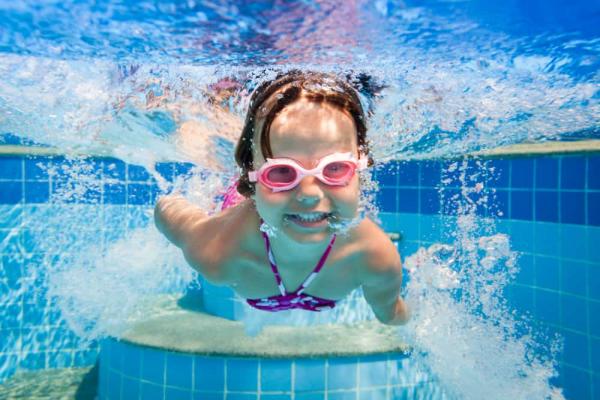
Other than a little bit of coughing, 10-year-old Johnny Jackson seemed fine. He had been playing in the neighborhood pool near his home in Berkeley, California, and nothing out of the ordinary had happened. After he was done playing, he returned home. His mother, Cassandra Jackson, noted that he seemed tired, but she assumed that it was only because he had been playing hard, she later told ABC News. She watched as Johnny went to his room for a nap and didn't think anything of it. When she checked on him, he was limp and had foam in his nose; he died on the way to the hospital.
The Berkeley County coroner noted that the boy had a lot of water in his lungs. This was surprising, because little Johnny had been supervised while in the water, and he had been wearing flotation devices on his arms. He didn't drown in the pool — yet he had essentially died from drowning — two hours later.
Johnny had died of secondary drowning. And, unfortunately, hundreds of others suffer the same fate — most of those victims being small children. Because young children usually don't know how to swim well and aren't very good at verbally communicating, they are the ones most at risk for dying this way.
Secondary drowning can sometimes be hard to identify because it doesn't occur until after an experience with the water — sometimes up to 24 hours later. Secondary drowning begins when someone breathes in water. This causes the little alveoli in the lungs to absorb the water and swell, meaning the lungs can't process oxygen. Because the body is being starved of oxygen, a person essentially suffocates. Sometimes this swelling process in the lungs takes a little while, though, and thus can happen anywhere from 1 to 24 hours after getting out of the water.
Some of the warning signs to look for include:
-
sudden or extreme fatigue
-
coughing
-
trouble breathing
-
chest pain
-
vomiting
-
confusion
-
change in behavior, such as irritability or forgetfulness
As these symptoms progress, the victim may get blue lips from the lack of oxygen.
Another severe sign, especially among small children, is urinating or defecating in their pants as their body begins to shut down and lose control.
Thankfully, secondary drowning is relatively rare — only 1 or 2 percent of all drownings happen this way. But even one death from secondary drowning is too many. Here are some things that you as a parent need to know to make sure that your child stays safe:
1. Watch them carefully
Make sure that your children are always supervised when they play in or near the water. If you don't feel like a lifeguard or another parent is doing a good job, then you may need to keep watch yourself. Or get in the pool and have some fun along with them! And never leave a child in a bathtub unsupervised.
2. Follow up
If your children get water in their lungs, keep a close eye on them for several hours afterward. This is a good idea even if you didn't see them have any near-drowning experiences. Secondary drowning is unexpected because drowning seldom looks the way it does in movies. There's no splashing or screaming. The child usually slips under the water for a few moments and there isn't a lot of disturbance above the surface. You may have been at the poolside the whole time and never even known that your child had a near-drowning experience and has water in his or her lungs. So follow up with your children even after they have dried off.
3. Don't hesitate to call 911
Don't hesitate to take your child to the hospital. Experts there can monitor your child's oxygen levels and determine what the best course of action is. If your child is unconscious, call 911 and begin chest compressions. Even if there is water in the lungs, CPR can help keep the blood circulating and may help get some of the water out.
4. Be educated
You're off to a great start by reading this article! Know the difference between secondary drowning and "dry drowning" (learn more about it here). Brush up on your CPR skills and share your knowledge with others.
5. Prevention is key
The best way to stop secondary drowning is to keep it from happening in the first place. Put guardrails or covers on your pools. Talk with your kids and make sure they know that they are never supposed to go swimming on their own. Make sure the children are always supervised. Teach your kids to swim. Knowing how to swim isn't a guarantee against secondary drowning, but it's far less likely to happen if the kids have some skills of their own. Mommy-and-baby swimming classes are a great way to start. There are even classes that teach babies how to roll over onto their backs in the water and float, just in case the baby ever falls in and has to wait to be rescued. If your kids are older, put them in swimming lessons. Until they are able to swim on their own, flotation devices are a great option.

